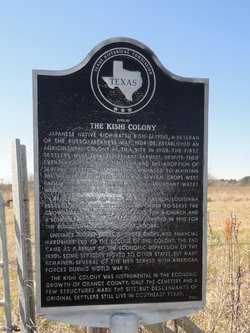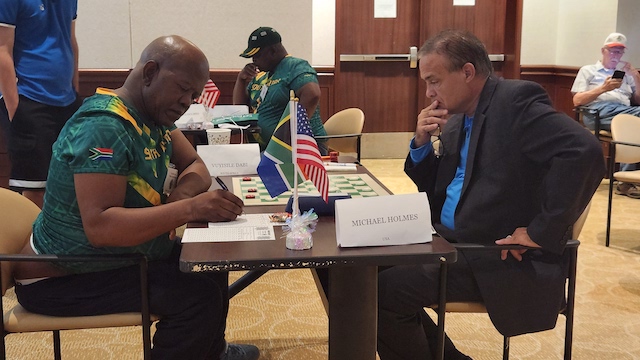What Made Orange Great: Kichimatsu Kishi is the founder of the Kishi Colony
Published 6:16 am Wednesday, October 20, 2021

- Leader file photo Located on Farm to Market Road 1135 about midway between Interstate 10 and Farm to Market Road 105 is a historical maker dedicated to the Kishi Colony.
|
Getting your Trinity Audio player ready...
|
By Mike Louviere
Located on FM 1135 about midway between I-10 and FM 105 is a historical maker dedicated to the Kishi Colony. The houses and barns are gone, and the fields are fallow, but this was once the land that grew crops from rice to strawberries and even had a profitable, though short production of oil.
Kichimatsu Kishi was born in Nagata, Japan in 1872. He was an ambitious young man that wanted to accomplish more than he felt he would be able to in his homeland, so he left Japan in 1907 with his second wife, Fuji, and young son Taro and migrated to America.
Kishi eventually settled in the community of Terry, located between Orange and Vidor. He had encouraged 16 other Japanese men to move to Texas and they began preparing 1600 acres for cultivation. The first order of business was to dig irrigation canals from Cow Bayou to the fields. Levees were constructed to hold the water and the plowing and planting began.
In the 1908 harvest, the sale of 15,753 sacks of rice weighing 200 pounds apiece brought $47,000 income to the new colony.
With the dredging of the ship channel to Orange, salt water invaded the rice fields and polluted the irrigation system. There was no longer the quantity of fresh waster needed to grow rice.
The colony needed to diversify its crops. By 1920, the crop production included cabbage, potatoes, onions, corn, cucumbers, spinach, celery, tomatoes, lettuce, carrots, beets, and strawberries. It was also about this time that oil was discovered on the portion of the land near Orangefield.
The eastern edge of Kishi’s land was on the edge of the deep salt dome that would produce the Orange oil field boom of the 1920s. The discovery of oil made Kishi a millionaire practically overnight and enabled him to pay off all of his creditors and he began to buy more land. He would eventually own 9000 acres.
Count Kojiro Matsukata, president of the Kawasaki Dock Company made a large investment in Kishi’s oil venture, and the Orange Petroleum Company was created. The land was leased for drilling to the Gulf Production Company, The Sun Oil Company, and Humble Oil and Refining Company. At its peak the wells produced slightly in excess of 400 barrels per day.
Additional oil was never discovered, and the wells began to slow production in 1923 and by 1925 production had nearly ceased. With the decrease in production, financial problems for Kishi began because of the notes due on his large land purchases.
In 1924, several officers of the Japanese Navy had toured Europe and America to view the state of military affairs. One of these officers was Commander Isoroku Yamamoto who was from the same hometown as Kishi and brought his delegation to Orange to view the Kishi oil field and to see how the Orange Petroleum Company was organized and run. On his return to Japan Yamamoto tried to interest the Nippon Oil Company to consider American operations. They were not interested.
Yamamoto later became the admiral who was the architect of the attack on Pearl Harbor. He was personally against attacking the United States but was trained to follow orders of his military superior officers and above all be loyal to his country.
In 1925, the Orange Oil Company was no longer profitable. Kishi’s finances were so depleted that he made trips to Japan to try to borrow money to stay in operation with his farming ventures.
After the start of World War II, the remaining interest in the Orange Oil Company properties was placed under the Alien Property Custodian Act and sold to the Kilmarnock Oil Company for the sum of $1. (Kilmarnock Oil Company still exists today)
Kishi was an American patriot. Japanese was spoken in the home, but outside the home English was the language. He wanted his son and daughter to be familiar with American customs and history and be proficient in the English and Japanese languages. Taro and his sister, Tokiko, had both attended public schools and the family attended the Methodist church. Kishi donated land and money to build the Methodist Church at Terry and also supported the school there.
Kishi’s son, Taro, was college age and registered at Texas Agricultural and Mechanical College. Taro became the first Asian-American to play football at Texas A&M. He was an outstanding halfback and was very fast and tough. He once played nearly half of a game after he had dislocated a shoulder.
Taro graduated in 1926 with a degree in Agriculture and returned home to help his father farm.
The Monday morning following the attack on Pearl Harbor, Kishi went to Port Arthur and turned himself in to the FBI. He wanted to show that he was a loyal citizen of the United States.
When asked if the Emperor ordered him to bomb a refinery in Port Arthur, “would you do it?”
He answered, “I am a businessman and a farmer and know nothing about explosives. Suppose I was adopted into another family and was ordered to harm them would I do it? I could not do so.”
Later the U.S. Attorney told Taro that his father “had answered all of our questions magnificently.”
Kishi was sent to Camp Kenedy, near San Antonio, for an internment period of only two months. The probable reason for his internment was due to his relationship with Yamamoto. Orange residents Lutcher Stark and J.O. Sims were quick to vouch for Kishi’s character and patriotism and drove to San Antonio to request his release.
The only other action taken was that the Kishi family had to surrender their firearms and cameras.
Fuji Kishi died in 1951. Kichimatsu died in 1956. Tokiko Kishi Hirasaki died in 1981, and Taro Kishi died in 1993. They are buried along with 20 other members of the Kishi Colony in a small cemetery located on the original Kishi tract.






